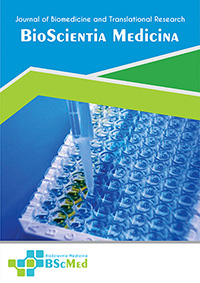Main Article Content
Abstract
Background: Intestinal anastomotic healing is a complex process, often complicated by inflammation and impaired regeneration, leading to leakage and stricture. Channa striata (snakehead fish) extract, traditionally used for wound healing, possesses bioactive compounds with potential anti-inflammatory and regenerative properties. This systematic review aimed to critically appraise the in vivo evidence for the effects of Channa striata extract on inflammatory and regenerative pathways in end-to-end anastomotic wound repair.
Methods: A comprehensive search of PubMed/MEDLINE, Scopus, Web of Science, Embase, and Cochrane Library databases was conducted for studies published between 2013 and 2024. Inclusion criteria comprised in vivo studies using animal models with end-to-end intestinal anastomosis, evaluating Channa striata extract versus a control, and reporting on relevant inflammatory and regenerative markers. Data extraction and risk of bias assessment (using SYRCLE's tool) were performed.
Results: Seven studies met the inclusion criteria. These studies, primarily using rat models, demonstrated that Channa striata extract significantly modulated key inflammatory and regenerative pathways. Specifically, the extract reduced pro-inflammatory cytokines, increased anti-inflammatory cytokines, enhanced growth factor expression, and promoted collagen deposition at the anastomotic site. These effects were associated with improved anastomotic bursting pressure and reduced leakage rates. Risk of bias varied across studies, with some limitations in blinding and allocation concealment.
Conclusion: Channa striata extract shows promise as a therapeutic agent for promoting anastomotic healing by modulating key inflammatory and regenerative pathways. However, further high-quality, standardized studies are needed to confirm these findings, elucidate precise mechanisms, and optimize extract formulation and dosage before clinical translation.
Keywords
Article Details
As our aim is to disseminate original research article, hence the publishing right is a necessary one. The publishing right is needed in order to reach the agreement between the author and publisher. As the journal is fully open access, the authors will sign an exclusive license agreement.
The authors have the right to:
- Share their article in the same ways permitted to third parties under the relevant user license.
- Retain copyright, patent, trademark and other intellectual property rights including research data.
- Proper attribution and credit for the published work.
For the open access article, the publisher is granted to the following right.
- The non-exclusive right to publish the article and grant right to others.
- For the published article, the publisher applied for the Creative Commons Attribution-NonCommercial-ShareAlike 4.0 International License.





